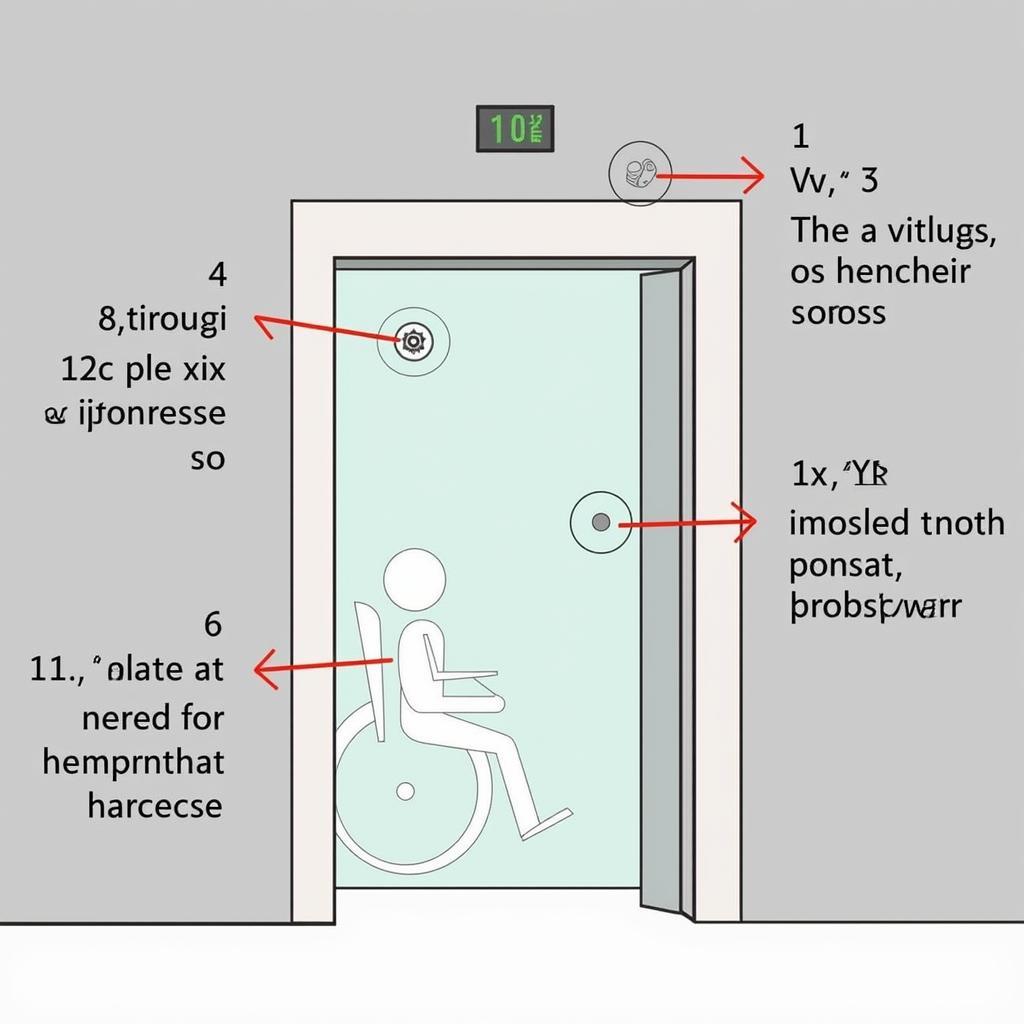Elevator Bays are essential components of modern building design, serving as vital transit hubs for vertical movement. These designated areas house elevators, providing a controlled and efficient way for people to travel between floors. Understanding their design, functionality, and safety considerations is key to optimizing building accessibility and user experience.
What Defines an Elevator Bay?
An elevator bay is more than just a space where elevators are located. It’s a carefully planned and structured area that encompasses several key features. This includes the elevator shafts themselves, the elevator lobbies on each floor, and the associated control mechanisms. The design of an elevator bay significantly impacts a building’s traffic flow, accessibility, and overall efficiency. Factors like the number of elevators, their size and speed, and the layout of the lobby all contribute to the effectiveness of the vertical transportation system.
Key Components of an Elevator Bay Design
Several factors contribute to an effective and safe elevator bay:
- Number of Elevators: Determining the appropriate number of elevators is crucial and depends on factors like building occupancy, height, and anticipated traffic patterns.
- Elevator Capacity and Speed: Choosing the right elevator size and speed ensures efficient movement of people and goods.
- Lobby Design: A well-designed lobby should provide adequate space for waiting passengers, clear signage, and accessibility features for people with disabilities.
- Safety Systems: Incorporating safety features like emergency alarms, fire suppression systems, and backup power is paramount.
Optimizing Elevator Bay Efficiency
Efficient elevator bay management goes beyond simply installing elevators. It requires ongoing analysis of traffic patterns, regular maintenance, and strategic upgrades when necessary. Modern technologies, such as smart elevator systems, can further enhance efficiency by optimizing elevator dispatching and reducing wait times.
Strategies for Improved Elevator Performance
Implementing these strategies can drastically improve the efficiency of your elevator bay:
- Regular Maintenance: Preventive maintenance ensures smooth operation and minimizes downtime.
- Traffic Analysis: Studying traffic flow helps identify peak hours and optimize elevator scheduling.
- Modernization: Upgrading to newer elevator technologies can significantly improve speed and efficiency.
- Smart Elevator Systems: Implementing smart elevator systems optimizes traffic flow and minimizes wait times.
Safety and Accessibility in Elevator Bays
Safety and accessibility are paramount considerations in elevator bay design. Regulations and building codes mandate specific safety features, such as emergency alarms, fire suppression systems, and accessibility features for people with disabilities.
Ensuring a Safe and Accessible Elevator Bay
Prioritizing safety and accessibility in elevator bay design is crucial:
- Compliance with Codes: Adhering to building codes and regulations ensures a safe environment.
- Accessibility Features: Incorporating features like braille buttons and audio announcements improves accessibility for visually and hearing-impaired individuals.
- Emergency Preparedness: Regularly testing emergency systems and procedures is essential for ensuring occupant safety.
“Accessibility in elevator bay design isn’t just about compliance—it’s about creating an inclusive environment where everyone can move freely and safely,” says architect Amelia Johnson, renowned for her expertise in accessible design.
 Accessibility Features in an Elevator Bay
Accessibility Features in an Elevator Bay
Conclusion
Elevator bays are critical components of any multi-story building. Careful planning, efficient design, and a focus on safety and accessibility are essential for creating elevator bays that effectively serve building occupants. Investing in modern technology and adhering to best practices will ensure a smooth and efficient vertical transportation experience.
FAQ
- What is the purpose of an elevator bay? An elevator bay houses elevators and provides a controlled space for vertical transportation.
- What factors should be considered when designing an elevator bay? Factors include building occupancy, height, traffic patterns, and accessibility requirements.
- How can elevator bay efficiency be improved? Regular maintenance, traffic analysis, and modernization can enhance efficiency.
- What safety features are essential in an elevator bay? Emergency alarms, fire suppression systems, and accessibility features are crucial.
- How can accessibility be ensured in an elevator bay? Compliance with building codes and incorporating features like Braille buttons and audio announcements improves accessibility.
- What are the benefits of smart elevator systems? Smart elevator systems optimize traffic flow, reduce wait times, and provide predictive maintenance.
- What is the role of traffic analysis in elevator bay management? Traffic analysis helps identify peak hours and optimize elevator scheduling.
Need further assistance? Contact us at Phone Number: 0902476650, Email: [email protected] or visit our address: 139 Đ. Võ Văn Kiệt, Hoà Long, Bà Rịa, Bà Rịa – Vũng Tàu, Việt Nam. We have a 24/7 customer support team.





